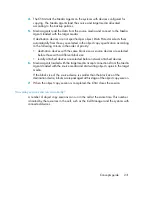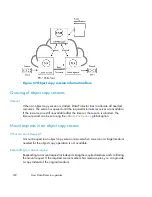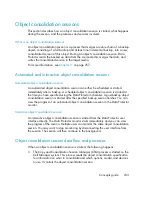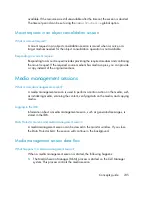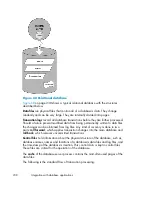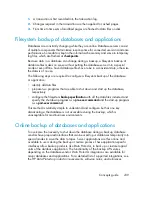
Backup types
Direct backup supports backup of application data files and control files and of disk
images -- either raw disk or raw logical volume.
Direct backup benefits
Because the data mover is in the SAN bridge and the technology that interprets the
target system is built into the General Media Agent, direct backup users can use a
low-cost management server to drive the backup and can avoid having to invest in
multiple servers to perform block identification.
Additionally, direct backup is designed to let you leverage hardware capabilities to
increase uptime and instant recovery capabilities to reduce restore time.
Direct backup is not limited to proprietary file systems and logical volume managers
(LVMs).
Direct backup adds value to your backup solution both by addition and omission.
For example, direct backup:
•
Takes advantage of the most advanced XCopy features to speed backups
•
Enables maximum uptime by leveraging existing hardware mirroring and snapshot
capabilities
•
Lets you take advantage of Data Protector’s industry-leading instant recovery
capability to speed recovery
•
Requires very little CPU and memory resource from the XCopy host device
How direct backup works
As with any other Data Protector backup, you will make a backup specification to
control how and when the backup happens.
•
The General Media Agent on the application server quiesces the application
•
The split mirror agent on the application server and backup host splits the mirror
•
The General Media Agent on the backup host:
• resolves the disk of the target system
• calculates the resolve information
• calls XCopy
•
XCopy, in turn, retrieves the target data and moves it across the bridge to the
tape device.
Concepts guide
245
Summary of Contents for B6960-96035
Page 17: ...Overview of backup and automated media copy sessions 340 105 Concepts guide 17 ...
Page 20: ...20 ...
Page 22: ...Publication history 22 ...
Page 132: ...Planning your backup strategy 132 ...
Page 182: ...Media management and devices 182 ...
Page 186: ...Users and user groups 186 ...
Page 204: ...The Data Protector internal database 204 ...
Page 218: ...Figure 62 Direct SIP integration example Service management 218 ...
Page 242: ...Integration with database applications 242 ...
Page 264: ...Synthetic backup 264 ...
Page 274: ...Split mirror concepts 274 ...
Page 288: ...Snapshot concepts 288 ...
Page 344: ...Further information 344 ...
Page 402: ...Glossary 402 ...

